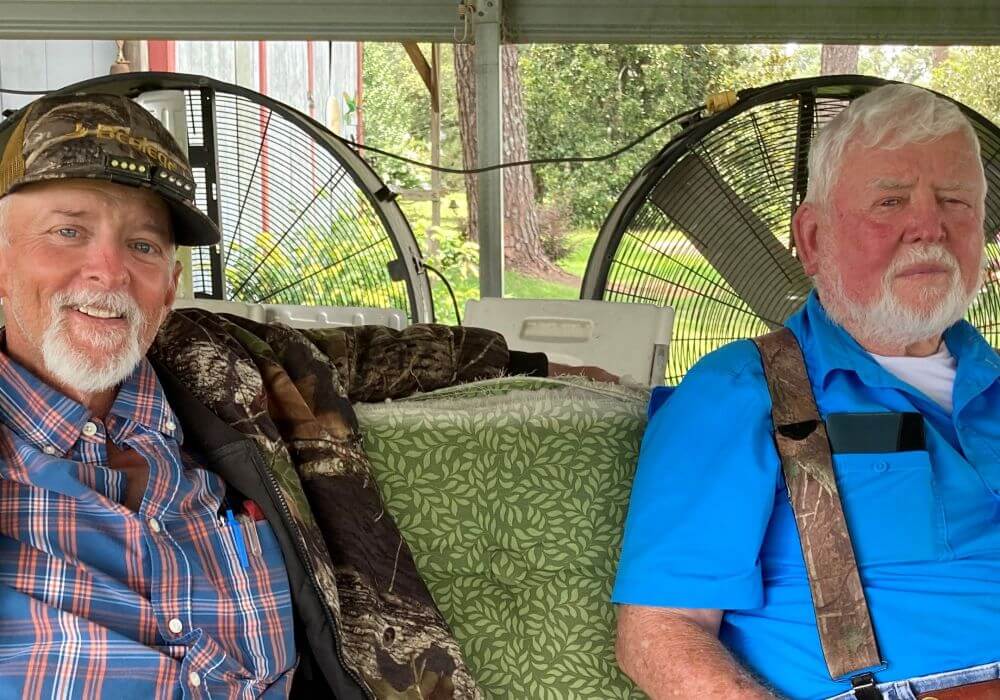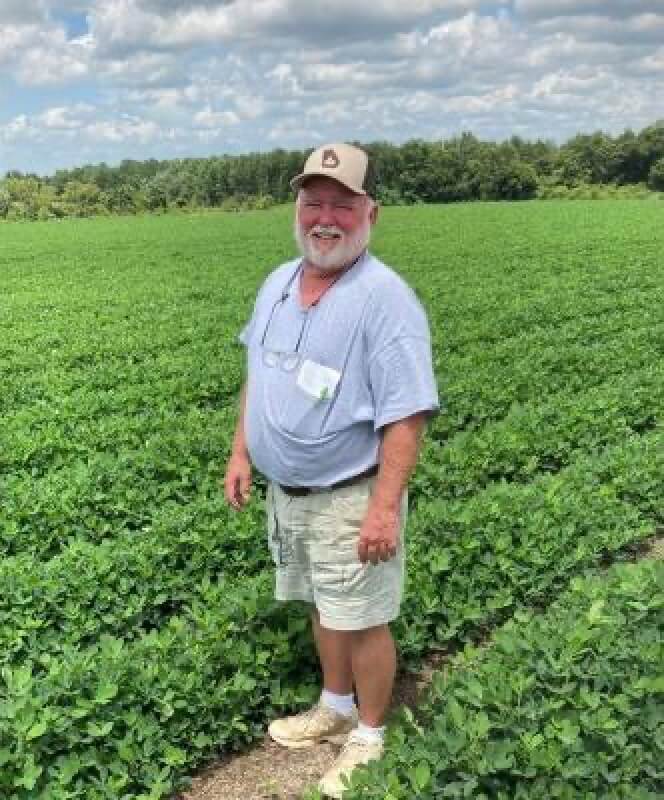
For the Wilders, Peanuts are a Generational Endeavor
No one will argue that farming has been easy the past few years, but there are some corners that just can’t be cut. Balancing the risk versus reward is one of the most complicated of decisions a grower will make in the planning process for next year’s crop.
For Littleton Wilder, Sr., and sons Littleton Wilder, Jr. and Lynn Wilder, 2020 was a bit of a shift in their crop mix. “We had a fairly normal price for peanuts in 2020, so we decided to put more of our acreage in peanuts,” Littleton Wilder, Jr. says. “Compared to some of the other options, it just made sense for us.”

Making it Work
The close-knit family has been farming in the Pelham area for four generations. Some of them even live on Wilder Road which will get to another road that will go somewhere – assuming of course, anyone would want to go somewhere else.
“We love farming, and we love this area,” says Littleton Wilder, Sr. “Sometimes it’s tough, but we do our best to make it work.”
Anticipating pest pressure is one of the most serious considerations the Wilders factor into their crop management long before a crop is ever planted. “We have one of the best, if not the best, crop consultants in the area who looks after our crops and helps us make decisions long before a seed ever hits the dirt,” Lynn Wilder, remarked. “We knew that moving a lot of our acreage to peanuts would create a problem with thrips. You could say the same thing about cotton. In this part of the world, thrips will just eat you up.”
Some Things Are a Must
Like almost any grower with any crop in any area, cutting costs are a top priority. However, some costs just can’t be cut.
“We believe that early season pest control is the key to making a good peanut crop,” Wilder, Jr. says. “You just can’t cut corners on that one.”
The Wilders use AgLogic™ aldicarb at a rate of 5.5 lbs. per acre at planting on all of their peanut acreage. “We do it mostly for thrips control, but I think it probably helps a little bit with nematodes, even at that rate,” he says.
Bypassing foliar sprays for thrips control has additional benefits, according to Wilder, Jr. “Obviously, there is the advantage of cutting out foliar applications,” he says. “There are so many things to do early in the season, it’s an incredible hassle to stop everything and go put out a thrips fire. Not, only that, but if you go put out a thrips fire with a foliar, you’ll probably end up with another fire.”
Flaring secondary pest problems with foliar sprays is always a concern – especially when cheaper, broad-spectrum sprays are used to control thrips.
“If we can get away without spraying during the early season, or at least minimize our early season sprays, we’re way ahead of the game,” Wilder, Jr. says. “In addition, sometimes I think it’s easy to forget how important beneficals are when it comes to controlling thrips. An in-furrow, at-planting material such as AgLogic™ not only gives us about six weeks of thrips control, but it doesn’t mess with the beneficials that gives us even more control.”
A Crop that Pops
Early stand establishment is also critical in peanuts, according numerous research trials in peanut growing areas. “It makes sense,” Wilder, Jr. says. “When you can get that plant to pop out of the ground with strong, healthy roots and a good canopy, it’s a lot more prepared to take on anything that might hold it back.”
An early, healthy stand of peanuts is always preferable to a spotty stand for obvious reasons, as well as some reasons that aren’t quite as obvious. Disease issues are typically less significant. Root and pod diseases are often typical in early stressed peanuts and then conducive to the onset of Tomato Spotted Wilt Virus, particularly when emergence is less than ideal.
In addition, an early developing canopy provides shade that reduces weed pressure. Fast forward to an always uncertain Fall, and an earlier harvest can prove quite beneficial in some years.
“You don’t have to ask us what an earlier harvest means,” Wilder, Jr. says. “We’ve been through enough terrible years where you wish you had just a week or two of a head start on getting those peanuts out of the field.”
Don’t Get Behind
The Wilders focused more on peanuts in 2020, but they also grow cotton in varying acreage depending on the price outlook. “It was a tough year to commit to cotton due to the price, but it’s always one of our options we consider,” Wilder, Jr. says. “That’s another crop where getting off to a good start is extremely important. You definitely don’t want to get behind in pest control before you even get started. Just like thrips control in peanuts, you do not want to play catch-up.”
Even though AgLogic™ is a more expensive, up-front investment than the wait-and-see approach, the Wilders believe it is well worth it when all is said and done.
“If anything, it’s just peace of mind,” Wilder, Jr. says. “We know we’re going to get off to the best start possible. We don’t have to worry so much about what thrips are going to do to the crop in the first few weeks, and I’m pretty sure it makes our consultant happy. That’s always a plus.”
Not Changing Now
The Wilders take everything they can into consideration when making any decision – financial or otherwise.
“You can’t look at the cost of one input without looking at what it contributes to the overall picture,” Wilder, Jr. says. “Yeah, maybe nematodes are a factor. It’s very likely an early start to a healthy crop is a factor. It’s hard to put a value on that one. Maybe we won’t have to spray as much. Maybe a better canopy is a factor in weed control. Maybe it’s something else. The one thing you can bet on year after year is that thrips are going to be a factor.”
Asked if he would cut any more corners for the 2021 season, Wilder, Jr. replied, “Everything we can possibly cut, but not the early season, in-furrow pest control. It’s worked for us for years, and we’re not about to change it now.”